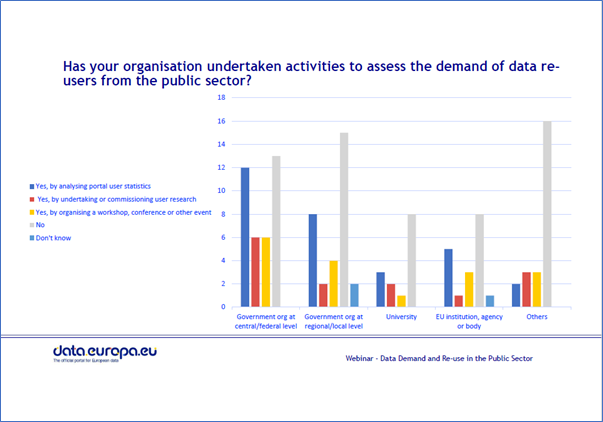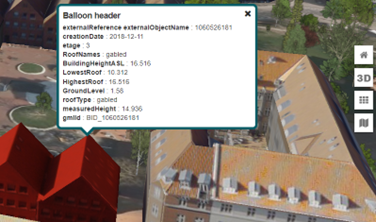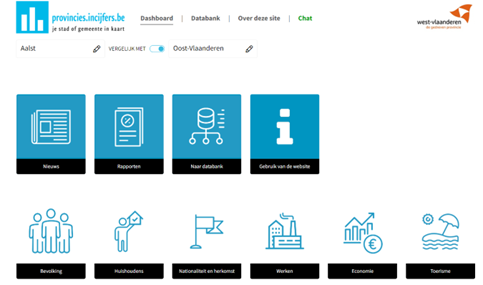Local governments as open data providers and reusers
Discover the role of local governments as data providers and data reusers in Europe
Traditionally, public administrations are seen as suppliers of data. But in the recent paper ‘Measuring data demand within the public sector’, followed by data.europa webinar and blogpost, data.europa.eu has added a focus on the demand side – on the role of public sector as users of open data. This blog will continue this exploration by looking at a specific case of local government, zooming in the granularity of cities and regions: how do they use open data themselves, and how do they support data use by not only private but also public sector bodies?
Why this focus on the local data supply? Because local level data are particularly important in the single market of data. Data-driven innovation is mostly about greater data granularity – having more precise and specific data about a specific problem. Highly granular local data can pave the way to innovation in the public and private sector alike, such as more precise meteorological data that can be used to accurately plan resource usage in agriculture, or traffic prediction data that helps both planning of traffic infrastructure and of individual travels. Granular smart meter data helps better managing energy distribution and facilitates behavioural change.
One clear example about the importance of the local data is the recent implementing regulation on high-value datasets, out of the six main categories included, four (geospatial, earth observation, meteorological, mobility) refer to very granular local datasets below the regional (NUTS 2) level. In other words, local data are of high value for the public and the private sector alike, whether they are held by national or local authorities.
Local governments play a strategic role in the open data ecosystem, both as a data provider and as a data user. The next section will illustrate why this is the case through the use of reuse cases and further examples.
The role of local governments as data providers
Local public administrations play a crucial role as data providers because they collect, generate and manage a vast amount of data from the specific region in which they are located. They hold and increasingly publish datasets that are reused by national governments, while leveraging data to address regional challenges such as public safety, infrastructure and environmental sustainability.
Local government is traditionally viewed as being more user-oriented and closer to its constituents, and this is also reflected in the open data realm. Recent thinking on open data has emphasized the importance of publishing open data in a purposeful, user-centric manner, which is crucial to ensure reuse and ultimately impact. For instance, the 2018 strategy of the Open Data Charter, a collaborative effort of 170 governments worldwide to define common principles on open data publication, is aptly titled “Publishing with Purpose”. In fact, many cities have embraced such approach. For instance, 11 of the 13 cities mapped by the UserCentriCities dashboard, a consortium of leading European cities supported by the Horizon programme, provide APIs to other administrations and to private companies to facilitate the reuse of their data. The National Single Access Points envisaged by the recent Data Governance Act will play a crucial role precisely in facilitating access and data reuse, and local authorities will play an important role in ensuring the effectiveness of such instruments by providing timely information about the data available for reuse.
Frontrunning local governments employ an array of methods to gauge the demand of data reusers, including those coming from the public sector itself. Local government representatives attending the data.europa.eu webinar on understanding public data demand in the public sector mentioned analysing portal statistics as the most popular method, followed by user research and organising events.

Figure 1 – Slide from the data.europa.eu webinar ‘Data Demand and Reuse in the Public Sector’
Understanding our reusers is essential in the whole process. By learning about the reusers from the public sector, their interests and needs, local governments can adopt a more demand-driven open data practice and shape their strategies to better serve citizens. It also sheds light on the needs of the local community to national governments for better decision making. Among the many examples discussed in the recently published 2023 data.europa.eu report Rethinking Open Data Impact, it is worth mentioning:
- The Helsinki Region open data portal, where four cities have joined forces on one single portal. They publish 175 APIs to facilitate data re-use, and one can find 301 re-use cases with filters for type and platform, and tags for themes. There is also a statistics section featuring extensive use of quantitative metrics on published data sets and use cases. As made clear during the 2021 EU Open Data Days presentation by Minna Joensuu, Deputy Research Director for the city of Espoo (Finland) on 10 years of best practices, more can be accomplished by working together, not only between data providers at the local level but also between providers and reusers. She also underlined that it is important to recognise that building a community does not happen overnight and that interoperable data make data reuse a lot easier.
- The Berlin open data portal highlights the most frequently used datasets in a separated section of its portal to facilitate access, and lists 67 reuse cases with description, used dataset, thematic tags and link to the app/website. The German capital also carried out a public survey considering the perceived importance of open data and ease of use and organised stakeholder workshops to inform the open data strategy.
- The Zaragoza open data portal features a reuse support section on the homepage of their open data portal. The portal’s statistics dashboard tracks formats and http methods of data access, and the number of daily data consultations. The capital of Aragon also presents 55 inspiring re-use cases of open data, featuring a short description and tags according to platform, device and thematic keywords.
The role of local governments as data reusers
Last but not least, local governments should be also seen as consumers and reusers of data. Data has become a crucial asset in policymaking, important to deliver effective and timely outputs. Still under-documented, cities and regional authorities are increasingly using diverse data sources to better deal with today’s challenges. Although there may not be many known examples of open data reuse - only 6 out of 26 webinar participants from the local level indicated having acted as an open data re-user –its public value is undeniable, as several examples show:
- The data.europa.eu Use Case Observatory also lists examples of data reuse within the public sector. The municipality of Aarhus together with the Danish Agency for Data Supply and Infrastructure have developed an object-based version of a 3D city model for Aarhus that can be used as a tool of analysis, visualisation and communication regarding climate adaptation, green conversion, urban planning, land management and much more. The model is mostly based on open data, namely geo data from Geo Denmark. These data are complemented by data on energy consumption of buildings from Denmark Footprints building height data from Pointcloud.

Figure 2 - Screenshot taken from the 3D city model with information about the selected building (in red)
- The Open Data Maturity report highlights examples of data reuse in public sector in Spain and Belgium. In Spain, the Valencia City Council has developed a data inventory tool to measure public policy efficiency and improve access to public information. In Belgium, five Flemish provinces have joined forces to provide open data to the dashboard ´Provinces in figures` with the aim to allow citizens and local politicians to compare statistics on different socio-economic parameters (e.g., demographics, housing, poverty, vacant real estate, energy use) across municipalities so they can launch plans to improve the local economy and society.

Figure 3- Screenshot taken from the dashboard of ‘Provinces in figures’
- The Dutch Province of North-Holland engaged a start-up to develop the web-based application Zonnedakje to show which roofs in the region have solar panels and which don’t. Data come from a variety of sources, among which aerial photographs, the Dutch base registry of addresses and buildings (BAG) and the Dutch Hight Map (AHN). The province uses the app to track the increase in solar panels.
Conclusions
The local level is where open data demand meets supply. It is where ecosystems grow. And finally, the local granularity is particularly important because this is where open data have the greatest impact, where innovation happens. It is not an accident that new theories of place-based innovation policy put forward by professor Soete focus on the importance of cities as innovation hubs. Due to their dense populations, city-level decision-making processes, and local stakeholder participation, local authorities provide for excellent testbeds for innovation. Open data are a fundamental ingredient of local innovation policy and cities need to take a more prominent role in both the open data and innovation policy discussion.
But the reality is that we still know too little about how open data portal can serve best the needs of public administrations.
How important is the use of open data portals by other public sector organisations?
How should open data services be designed to better help the needs of other public administrations? What good practices are there?
How can data.europa.eu support governments as open data providers and reusers?
We are currently running a survey to find an answer to these questions. The insights will be used for a final report, to be published in June 2023.
For updates on how to measure the impact of (local) open data, follow us on Twitter, Facebook and LinkedIn, or subscribe to our newsletter.
